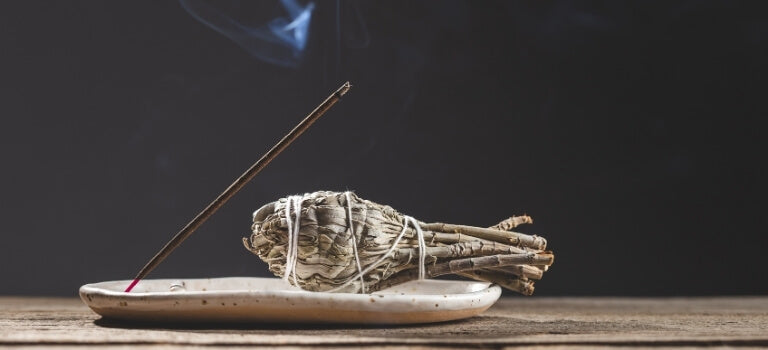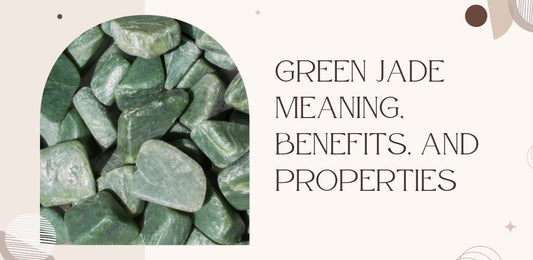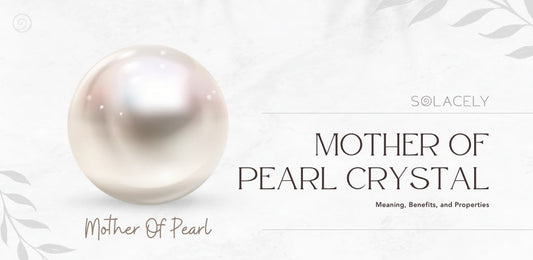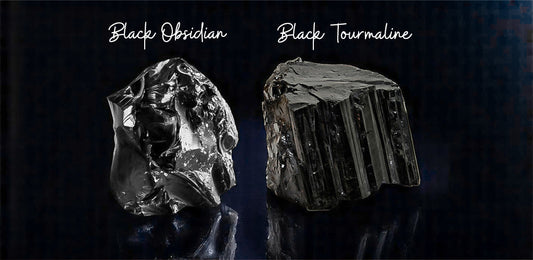Crystals have been cherished not only for their beauty but also for their reputed healing and spiritual properties. These natural minerals are believed to absorb, store, and emit energy, making them popular tools in various holistic and spiritual practices. People use crystals for meditation, healing energy, empowerment, and protection.
However, just as crystals can absorb positive energies, they can also pick up negative or stagnant energies from their surroundings. This is why regular cleansing is crucial. Cleansing crystals helps to restore their natural energy, enhance their effectiveness, and ensure they continue to serve as powerful tools for your spiritual practices.
One of the most traditional and widely used methods for cleansing crystals is with sage incense. Sage has been used for centuries in various cultures, particularly within Native American traditions, for its powerful cleansing and purifying properties. Burning sage, also known as smudging, is believed to clear negative energy, improve mood, and purify spaces and objects like crystals. Using sage to cleanse crystals helps clear unwanted energies and infuses the stones with a rejuvenating, protective aura. This introduction to sage cleansing sets the stage for understanding this ancient practice and how it can be applied to modern spiritual routines.
Why Cleanse Crystals?
Crystals are admired for their aesthetic beauty and valued for their ability to interact with energies. According to many spiritual and healing traditions, crystals act like sponges, absorbing and retaining energies from their environment. This characteristic allows them to influence the space around them, making them beneficial for meditation, healing, and emotional support.
Absorption of Energies
Crystals can pick up a variety of energies throughout the day, whether from people, places, or different situations. Just as they can absorb and enhance positive vibes, they can also hold onto negative or stagnant energies. Over time, these unwanted energies can accumulate and may cloud the crystal's natural properties.
Impact on Effectiveness
When a crystal is overloaded with absorbed energies, especially negative ones, its effectiveness can be significantly diminished. For example, a crystal intended to promote relaxation and peace, like Amethyst, might become less potent if it's saturated with stress and anxiety from its environment. This can prevent the crystal from functioning at its best, reducing its ability to support emotional balance or spiritual growth.
The Role of Sage Incense in Crystal Cleansing
Regular cleansing is essential to restore a crystal's natural vibrancy and efficacy. Sage incense is a popular choice for this purpose. Burning sage emits negative ions, which can help neutralize positive ions (commonly associated with excess positive charge and negative energy). The smoke from sage incense acts as a natural purifier, enveloping the crystal and cleansing it of lingering negative energies. This clears the energy blockages within the crystal and recharges it with positive, protective vibrations, readying it for continued use in personal or environmental enhancement.
Incorporating sage incense into your crystal cleansing routine ensures that your crystals remain potent and pure, capable of performing their energetic duties effectively. This practice enhances the crystals' properties and contributes to a more harmonious and energetically balanced environment.
Benefits of Using Sage for Cleansing
Sage has long been revered in various cultures for its powerful cleansing and protective properties. This aromatic herb is pivotal in traditional cleansing rituals, purifying spaces, objects, and individuals from negative energies. The use of sage for these purposes spans continents and cultures, highlighting its universal acceptance as a potent cleansing tool.
Historical and Cultural Significance
The use of sage as a cleansing and purifying agent is most notably linked to Native American traditions, particularly within rituals known as smudging. This practice involves burning sage to produce smoke, which is believed to clear spiritual impurities, ward off negative energies, and reset the spiritual atmosphere. Historically, sage was also used in the rituals of many other indigenous tribes worldwide, from the ancient Celts to the indigenous peoples of the Amazon. Each culture has recognized the herb's power to cleanse tangible and intangible entities, making it integral to spiritual practices.
Properties of Sage
White Indian Sage is rich in compounds that produce negative ions when burned, which research suggests can help neutralize positive ions (commonly associated with allergens and stress). In energy work, this property is extended to a metaphysical level; sage is believed to similarly clear away negative energies and influences. Sage's firm, spicy aroma is also thought to repel entities and energies that could disrupt spiritual tranquility or emotional peace.
Cleansing and Protective Benefits
Beyond merely cleansing spaces and objects, sage is known to create a protective barrier around the cleansed area or object. This barrier is thought to shield against the entry of harmful spirits and energies, making sage particularly valuable in settings where maintaining a positive energy field is crucial. After cleansing with sage, the environment or object is purified and blessed with a protective shield that fosters a safe and sacred space. This makes sage particularly effective for cleansing crystals, as it ensures that they are free from negative energies and shielded from them in the future.
Sage's cleansing benefits are twofold: it purifies by removing negative energies and protects by preventing their return. This dual action makes sage an indispensable tool in spiritual cleansing, whether for personal use, in the home, or ceremonial spaces.
Types of Sage Incense
Sage comes in various forms, each suited for specific cleansing purposes. The most common types used in spiritual and energy cleansing include white sage, garden sage, and manufactured sage incense sticks. Understanding the differences and applications of each can help you choose the most appropriate form for your needs.
Common Types of Sage
- White Sage: The most popular type used in smudging and cleansing rituals. White sage is known for its strong aromatic properties and thick, durable leaves that produce a robust smoke ideal for deep cleansing. It is native to the southwestern United States and has been used by Native American tribes for centuries.
- Garden Sage: Often used in cooking, this variety is more accessible and has a milder scent than white sage. While it can be used for cleansing purposes, it is generally less potent but can be a good substitute if white sage is unavailable.
- Sage Incense Sticks: These are manufactured sticks that combine sage with a binding material to burn continuously. Sage incense sticks are convenient and less messy than burning loose sage leaves. They are best used to maintain a cleansed space after deep cleanses with loose sage.
Pros and Cons of Sage Sticks vs. Loose Sage
Sage Sticks
Pros
- Convenience: Easy to light and manage without additional tools like charcoal or a fireproof container.
- Consistency: Provides a steady stream of smoke, ideal for smaller spaces or a quick refresher.
- Cleanliness: Less ash and debris compared to burning loose leaves.
Cons
- Potency: Often less potent than loose sage due to the inclusion of binding agents.
- Limited Coverage: More smoke may be needed to cleanse larger areas effectively.
Loose Sage
Pros
- Potency: Provides a robust and intense smoke that is highly effective for deep cleansing rituals.
- Flexibility: This method allows for controlling the amount of sage used per session, which can be adjusted based on the size of the area or intensity of cleansing needed.
Cons
- Messier: Produces more ash and can be more challenging to manage without proper tools.
- Preparation: More preparation is required, including a fireproof container and possibly charcoal if you are not using a bundle.
When choosing between sage sticks and loose sage, consider the scale of your cleansing ritual, the convenience factor, and the depth of cleansing required. Sage sticks might be sufficient and more practical for regular or daily use. However, for a more thorough cleanse, especially in a new home or after significant life changes, loose white sage is typically recommended for its superior cleansing properties.
Step-by-Step Guide to Cleansing Crystals with Sage Incense
Cleansing your crystals with sage incense is a powerful way to clear negative energies and recharge the stones with positive vibrations. Here's a detailed guide on effectively using sage incense for cleansing crystals.
Preparation: Setting Up a Safe Space
- Choose a Well-Ventilated Area: Ensure the space where you plan to burn sage is well-ventilated. Open windows or doors as needed to allow smoke to escape.
- Gather Your Supplies: You will need sage incense sticks or loose sage, a fireproof container or incense holder, crystals, and a lighter or matches.
- Create a Calm Environment: Set a calm and respectful tone in the space where you will be performing the cleansing. You might choose to play soft background music or enjoy the silence.
Lighting the Sage: Safely Ignite and Handle
- Loose Sage: If using loose sage, place it in a fireproof container or shell. Light the tips of the sage bundle or leaves until they smoke, then blow out any flames to let them begin to smoke.
- Sage Incense Sticks: Light the tip of the sage incense stick. Let it burn for a few seconds, and then gently blow out the flame to allow it to begin smoking.
Cleansing Ritual: Passing Crystals Through Sage Smoke
- Hold the Crystal: Pick up the first crystal and hold it in the smoke of the burning sage. Ensure the smoke surrounds the crystal.
- Move the Crystal: Slowly rotate the crystal within the smoke, allowing the sage's purifying properties to envelop every stone facet. Spend 30 seconds to one minute with each crystal, depending on its size and how deeply you feel it needs cleansing.
Intentions and Affirmations: Enhance the Cleansing Process
- Set an Intention: While holding the crystal in the smoke, set a specific intention or say an affirmation related to the cleansing. For example, "I cleanse this crystal of all negative energies and recharge it for its highest good."
- Visualize: Imagine the smoke washing over and through the crystal, extracting negativity and replenishing it with vibrant, positive energy.
Completion: Extinguishing the Sage and Storing the Crystals
- Extinguish the Sage: Safely extinguish the sage incense once all your crystals have been cleansed. If using a stick, press it into sand or dirt in the incense holder until it goes out. For loose sage, cover the container to cut off oxygen and smother the embers.
- Store the Crystals: Place your cleansed crystals where they won't be disturbed. This could be on a windowsill to charge under moonlight or sunlight or in a special box or cloth where they are kept safe and clean.
By following these steps, you ensure that your crystals are energetically cleansed and treated with the respect and care they deserve. Cleansing your crystals regularly helps maintain their energy levels and effectiveness, supporting you in your spiritual or healing practices.
Aftercare for Cleansed Crystals
Once you've cleansed your crystals using sage incense, proper aftercare is crucial to maintain their cleanliness and potency. Here are some tips on caring for your crystals post-cleansing and suggestions for establishing a routine to keep them vibrant and energetically compelling.
Maintaining Cleanliness and Potency
Proper Storage
Store your crystals in a clean, dedicated space where they can remain energetically pure. A fabric-lined box, silk pouches, or even a special shelf reserved for your crystals can protect them from dust and other environmental contaminants. Ensure they are not piled on each other to avoid scratches or chips.
Avoid Contamination
Keep your crystals away from electronic devices and areas with heavy traffic or noise. These can introduce new energies that might disrupt the crystal's natural vibrations. It's also advisable to handle your crystals with clean hands and to physically clean them occasionally by gently wiping them with a soft, dry cloth.
Recharging Crystals
Regularly recharge your crystals to restore their natural energy. This can be done by placing them in direct sunlight or moonlight for a few hours. However, be cautious as some crystals, like Amethyst, can fade in sunlight. Other recharging methods include burying them in the earth overnight or placing them on a selenite charging plate.
Setting a Routine for Regular Cleansing
Frequency of Cleansing
The frequency with which you should cleanse your crystals depends on how often you use them and the environments to which they are exposed. A good rule of thumb is to clean them once a month or after intense energy work. However, if you feel a crystal has been mainly drained or has been around heavy energy, cleanse it as needed.
Scheduled Cleansing
Set a regular schedule for cleansing your crystals. Aligning this with natural cycles, such as the new moon or full moon, can make remembering easier and adds a ritualistic and powerful element to the cleansing process.
Keeping a Cleansing Log
Maintain a log or journal of when you cleanse and recharge your crystals. Note any changes in their appearance or energy levels and how they affect your mood or environment. This can help you tailor your cleansing routine to the specific needs of each crystal.
Additional Care Tips
- Intuitive Care: Sometimes, a crystal needs immediate attention. Trust your instincts—if a crystal feels heavier or duller than usual, it might be time for a cleanse or recharge, regardless of your regular schedule.
- Group Cleansing: When possible, cleanse all your crystals together. This saves time and energizes the crystals to support one another energetically through cleansing.
- Handling With Care: Always hold your crystals gently and with respect. This mindful approach helps maintain their structural integrity and honors their role in your spiritual practices.
By following these aftercare steps and establishing a routine for regular cleansing, you ensure that your crystals remain potent allies in your journey toward spiritual awareness and personal well-being.
Common Mistakes to Avoid When Cleansing Crystals with Sage
Cleansing crystals with sage is a widely practiced ritual, but common mistakes can hinder the cleansing process's effectiveness. Here are some typical errors, along with tips on how to avoid them to ensure your crystals are adequately cleansed:
Not Setting a Clear Intention
- Mistake: Forgetting to set a specific intention or affirmation during the cleansing process can lead to suboptimal results, as intentions help direct the cleansing's energy.
- Tip: Before you begin, take a moment to focus on what you want to achieve with the cleansing—whether it's removing negativity, recharging the crystal's energy, or something else. State your intention aloud or silently as you pass the crystal through the sage smoke.
Incomplete Exposure to Smoke
- Mistake: Quickly waving the crystal through the smoke or not ensuring the smoke envelops the crystal entirely can lead to an incomplete cleanse.
- Tip: Make sure the sage smoke surrounds all parts of the crystal. Slowly rotate the crystal in the smoke, allowing enough time for the smoke to adhere to every surface and crevice.
Using Contaminated Sage
- Mistake: Using sage that has been stored improperly or exposed to negative energies can compromise the cleansing process.
- Tip: Store your sage in a clean, dry place away from solid energy sources. Before using, hold the sage in your hand and set an intention to cleanse and purify it, ensuring it's free from prior energies.
Poor Ventilation
- Mistake: Burning sage in a poorly ventilated area not only makes it difficult to breathe but can also trap negative energies released during the cleansing.
- Tip: Always perform sage cleansing in a well-ventilated area, ideally with windows open, to allow fresh air to circulate and carry away the negative energies.
Not Respecting the Sage
- Mistake: Not treating the sage with respect can diminish its effectiveness. Sage is a sacred herb in many cultures; disrespecting it can affect your results.
- Tip: Handle your sage with respect and gratitude. Acknowledge its power and role in your spiritual practices before you begin the cleansing.
Ignoring Follow-Up Care
- Mistake: Neglecting to care for crystals after cleansing them with sage can quickly cause them to reabsorb negative energies.
- Tip: After cleansing, consider placing the crystals in moonlight or sunlight (if appropriate for the type of crystal) to recharge them. Additionally, store them in a clean, sacred space where they can maintain their purity.
Rushing the Process
- Mistake: Hurrying through the cleansing ritual can make it less effective and meaningful.
- Tip: Treat the cleansing process as a meditative, intentional act. Allow yourself plenty of time to thoroughly perform the ritual without rushing.
By being mindful of these common mistakes and following the suggested tips, you can enhance the effectiveness of your sage cleansing ritual and ensure that your crystals remain powerful tools for your spiritual and healing endeavors.
Alternatives to Sage for Those with Sensitivities
While sage is a popular and traditional herb used for cleansing spaces and crystals, some individuals may find its strong aroma overpowering or may have sensitivities to its smoke. Fortunately, several other herbs and incense options can be used as effective alternatives for cleansing. Here's a look at some of these alternatives, including their benefits and uses.
Palo Santo
Palo Santo, which means "holy wood" in Spanish, comes from the Bursera graveolens tree native to South America. It has a sweet, woody aroma with hints of citrus and mint.
- Benefits: Palo Santo is renowned for its ability to cleanse spaces of negative energy and attract positive energy. It is also believed to bring tranquility and calm, making it ideal for meditation.
- Uses: Light a stick of Palo Santo and allow it to burn for about 30 seconds to a minute, then blow out the flame. Pass your crystals through the resulting smoke to cleanse them.
Cedar
Cedar, often used in the form of smudge sticks, is another powerful cleansing tool that has been used by various cultures, particularly in North America.
- Benefits: Cedar is known for its grounding and purifying properties. It is said to enhance prosperity and protect against negative energies.
- Uses: Like sage and Palo Santo, you can burn cedar to cleanse your space or crystals. Its smoke is less dense and has a fresh, woodsy scent that many find appealing and less intense than sage.
Lavender
Lavender is well-known for its calming and relaxing properties but can also be used as a smudging herb.
- Benefits: Lavender helps to promote a peaceful atmosphere, reduces stress, and attracts loving energy. It is also used for its ability to harmonize and stabilize existing energies.
- Uses: Lavender can be burned alone or mixed with other herbs in a smudge stick. Its gentle smoke is ideal for those sensitive to stronger scents and perfect for a light cleansing or calming environment.
Sweetgrass
Sweetgrass is another herb traditionally used by Native American peoples for its cleansing and inviting properties.
- Benefits: Sweetgrass is believed to purify spaces and attract positive energies. Its sweet, pleasant aroma is less likely to cause irritation than sage's.
- Uses: Typically braided into ropes, sweetgrass can be burned after sage or other herbs to bring positivity once negativity has been cleared.
Each of these alternatives offers unique benefits and can be used in place of sage for those who find it too harsh or are allergic to it. Experimenting with these options can also enrich your cleansing practices, allowing you to customize the process according to your specific needs and preferences. Whether you choose Palo Santo for its sweet scent and tranquility, cedar for protection, lavender for harmony, or sweetgrass for positivity, each provides a valuable way to maintain the energetic purity of your space and crystals.
Keeping your crystals energetically clean is crucial for their effectiveness in spiritual and healing practices. Over time, crystals absorb various energies from their environment, clouding their natural properties and diminishing their ability to function as intended. Regularly cleansing your crystals ensures that they remain powerful tools, capable of supporting your emotional, physical, and spiritual well-being.
Incorporating crystal cleansing into your regular spiritual or self-care routine can also enhance your connection with your crystals. It turns the practice of cleansing into a meditative, introspective, and rejuvenating ritual that benefits the crystals and aligns your own energies. Whether you use sage, Palo Santo, cedar, lavender, or any other cleansing herb, each session is an opportunity to reset and refresh your home's energetic atmosphere and aura.
We encourage all our readers to explore different crystal cleansing methods and find the one that best suits their needs and sensitivities. Experiment with various herbs and share your experiences. What works best for you? Do you have a preferred herb for cleansing or a special ritual you perform? Your insights and practices could greatly benefit others in our community looking to deepen their understanding of the effectiveness of crystal cleansing.








